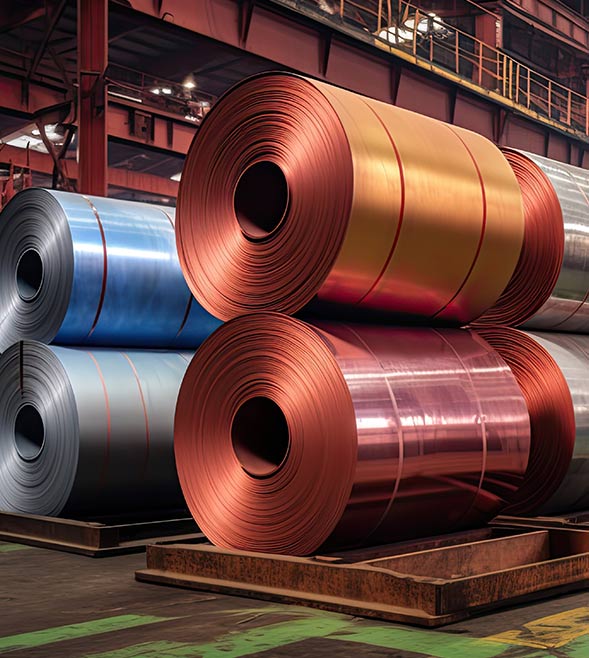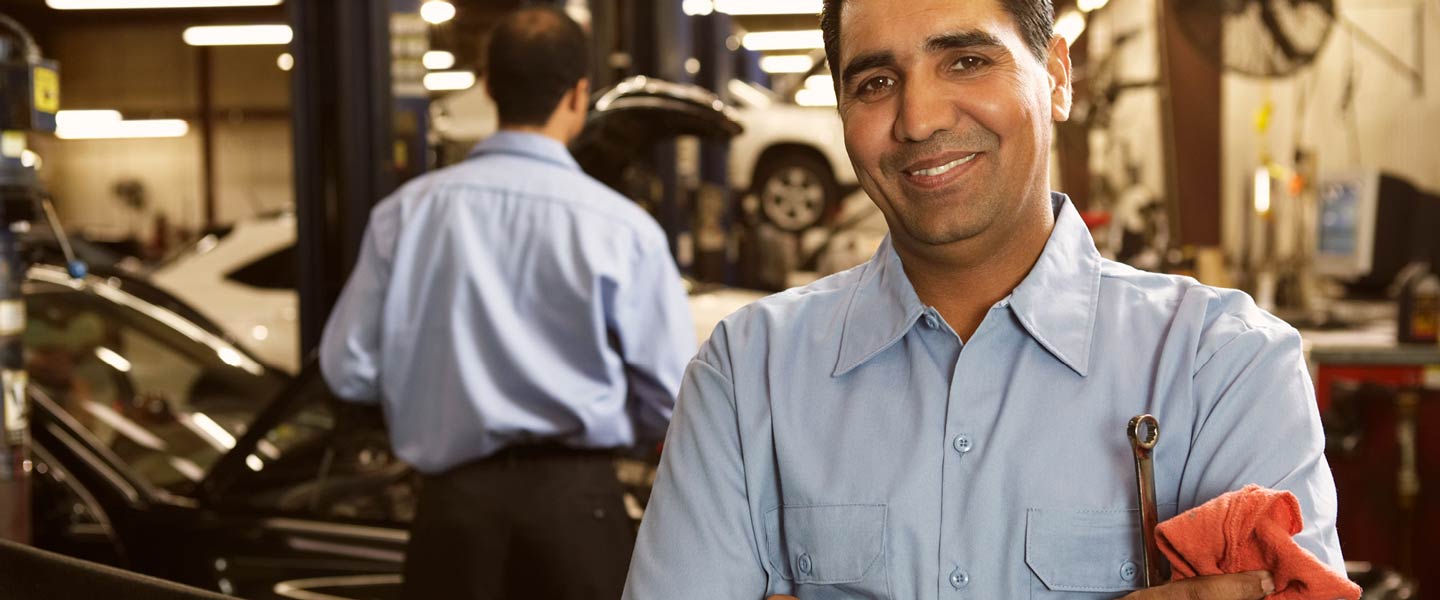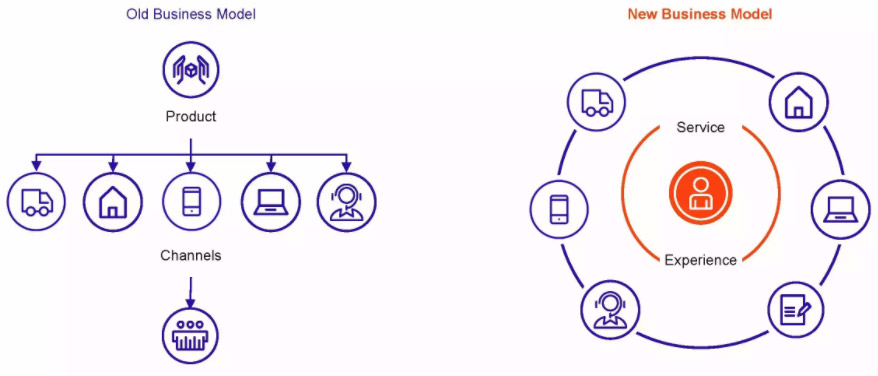-
Business Consulting
Our business consulting specialists offer a comprehensive blend of strategic advisory services. We assess the business, industry, operating model, synergy, skill sets and vision of the organisation and recommend the way forward
-
Digital Natives
Unlock growth with Grant Thornton Bharat's Digital Natives solutions. Customised support for tech-driven companies in healthcare, gaming, and more.
-
Digital Transformation Services
Grant Thornton’s digital transformation services help traditional businesses digitalise their business models with cloud technology, IoT consulting, app development and more DigiTech solutions.
-
Finance Transformation
Using a holistic approach, integrating digitalisation and digital transformation we help clients achieve transparency, control, governance, and faster decision making through real-time data within the business.
-
Human Capital Consulting
Our Human Capital Consulting team harnesses technology and industry expertise to assist in constructing adaptable organisations with transparency, fostering productive and value-driven workforces, and inspiring employees to engage meaningfully in their tasks.
-
Production Linked Incentive Scheme
Production-linked Incentive Scheme by the Indian government is aimed at boosting manufacturing. Grant Thornton Bharat offers varied services across sectors to help businesses avail of this scheme.
-
Public Sector Advisory
Our Public Sector Advisory team has focused streams, aligned with the core priorities of the Government of India. We are responsible for providing innovative and customized technical and managerial solutions.
-
Tech Advisory
We have amalgamated Digital Transformation, IT Advisory & Information Management and Analytics into a new offering, DigiTech.

-
Direct Tax services
Our tax specialists offer a comprehensive blend of tax services, tax litigation, regulatory and compliance services, helping you navigate through complex business matters.
-
Indirect Tax Services
Get tax services by leading tax firm Grant Thornton India. Our indirect tax services include consulting, compliance and litigation services for corporate, international and transaction tax
-
Transfer pricing services
Our transfer pricing services experts provide a range of services from provision of APA services to handling large global assignments including Country by Country reporting.
-
US Tax
At Grant Thornton, we help individuals and dynamic companies deal with US tax laws, which are one of the most complicated tax legislations across the world.
-
Financial Services - Tax
Best financial advisory services, tailored for small and large businesses by the experts having comprehensive knowledge of domestic laws and access to multifaceted tools to provide a valuable results.
-
Financial Reporting consulting services
Our experts have significant hands-on experience in providing IFRS/US GAAP services, end-to-end solutions and support services to fulfil financial reporting requirements.
-
Fund accounting and financial reporting
International operations often lack standardisation and have varied local reporting formats and requirements. Our experts can offer proactive insights, practical guidance, and positive progress and help meet regulatory timeframes.
-
Compliance and Secretarial Services
Our experts can assist in overhauling the entire compliance machinery of the organisation through evaluation of the applicable statutory obligations, monitoring of adequate governance controls, reporting and providing ongoing support.
-
Global People Solutions
As businesses transcend borders, both domestic and global considerations need equal attention. Our interim CFO and financial controller support services help organisations meet the business vision.
-
Finance and accounting outsourcing
Our accounting experts assist organisations in managing their accounting and reporting. Our dedicated Integrated Knowledge and Capability Centre (IKCC), allows us to service both the domestic and global markets efficiently and cost-effectively
-
Compliance Management System
We have automation solutions for you that will allow meeting government requirements and remain diligent, which when failed, can lead to penalties and loss in revenue.
-
Global compliance and reporting solutions
At Grant Thornton Bharat, we meet the challenges of our clients and help them unlock their potential for growth. Our professionals offer solutions tailored to meet our clients’ global accounting and statutory reporting requirements. With first-hand experience of local reporting requirements in more than 145+ locations worldwide, we provide seamless and consistent international service delivery through a single point of contact.
-
Related-party transaction governance
Related-party transactions (RPTs) are common in business structures where organisations engage with their group entities, such as holding companies, subsidiaries, associate concerns, joint ventures, or key management personnel, for various operational or financial purposes.
-
Family Offices & Private Client Services
Grant Thornton Bharat Private Client Services offers tailored advisory for family-owned businesses, focusing on governance, compliance, tax, succession planning, and family office structuring to sustain wealth and preserve legacies across generations.
-
GTMitra: Tax & Regulatory Tool
GTMitra, a specialised tax and regulatory tool by Grant Thornton Bharat, supports multinational businesses in understanding laws and regulations for effective growth strategies.
-
Labour codes
Labour codes solutions help you transition through the new legislation. At Grant Thornton, we help businesses divide their approach to make sure a smooth transition.
-
Alerts
At Grant Thornton India, with the help of our tax alerts, we help to provide updates on how to minimise your tax exposure and risks.
-
Unlocking opportunities: India investment roadmap
The India Investment Roadmap resource is designed to navigate the complexities of Indian tax and regulatory laws, providing seamless guidance and a comprehensive set of solutions to ensure a smooth process for investors aiming to establish or expand their presence in India.
-
CFO Solutions
Our comprehensive suite of solutions for CFOs

-
Cyber
In today’s time, businesses have gone through large transformation initiatives such as adoption of digital technologies, transition to cloud, use of advanced technologies et al.
-
Risk Optimisation
Our Governance, Risk and Operations (GRO) services encompass Internal Audit, Enterprise Risk Management, Internal Financial Controls, IT advisory, Standard Operating Procedures and other services.
-
Risk analytics
Grant Thornton Bharat’s CLEARR Insights is a state-of-the art data analytics platform that will help you in seamless data analysis and efficient decision-making.
-
Forensic & Investigation Services
The team of forensic advisory services experts consists of the best intelligence corporate experts, and fraud risk, computer forensic experts to deliver most effective solutions to dynamic Indian businesses.
-
Digital Forensics and Incident Response (DFIR)
Strengthen cyber resilience with proactive forensic audits
-
ESG consulting
Grant Thornton Bharat offers holistic ESG consulting solutions for sustainable business outcomes. With industry expertise and AI technology, we drive long-term value.

-
Transaction Tax Services
Our transaction tax experts understand your business, anticipate your needs and come up with robust tax solutions that help you achieve business objectives ensuring compliance and efficiency
-
Deal Advisory
Unlike other M&A advisory firm in India, we offer deal advisory services and work exclusively with controlled and well-designed strategies to help businesses grow, expand and create value.
-
Due Diligence
Grant Thornton’s financial due diligence services are aimed at corporate looking for mergers and acquisitions, private equity firms evaluating investments and businesses/promoters considering sale/divestment.
-
Valuations
As one of the leading valuation consultants in India, Grant Thornton specializes in all the aspects of the process like business valuation services, financial reporting, tax issues, etc.
-
Overseas Listing
Overseas listing presents a perfect platform for mid-sized Indian companies with global ambitions. Grant Thornton’s team of experts in listings, work closely with clients during all stages.
-
Debt & Special Situations Solutions
Grant Thornton Bharat offers specialist debt and special situations consulting services, including restructuring, insolvency, and asset tracing solutions.
-
Financial Reporting Advisory Services
Grant Thornton Bharat Financial Reporting Advisory Services offer end-to-end solutions for complex financial requirements, including GAAP conversions, IPO support, and hedge accounting advisory, ensuring accurate financial reporting and compliance.
-
Financial Statement Audit and Attestation Services
Grant Thornton Bharat offers customised financial statement audit and attestation services, ensuring impeccable quality and compliance with global standards. Our partner-led approach, technical expertise, and market credibility ensure effective solutions for your business needs.

- Agriculture
- Asset management
- Automotive and EV
- Banking
- Education and ed-tech
- Energy & Renewables
- Engineering & industrial products
- Fintech
- FMCG & consumer goods
- Food processing
- Gaming
- Healthcare
- Urban infrastructure
- Insurance
- Media
- Medical devices
- Metals & Mining
- NBFC
- Pharma, bio tech & life sciences
- Real estate and REITs
- Retail & E-commerce
- Specialty chemicals
- Sports
- Technology
- Telecom
- Tourism & hospitality
-
 Thought leadership Co-lending in India: Expanding credit access for MSMEsIn today’s rapidly evolving financial landscape, co-lending has emerged as a key enabler of credit expansion in India, facilitating partnerships between banks and non-banking financial companies (NBFCs) to extend credit more efficiently to underserved segments.
Thought leadership Co-lending in India: Expanding credit access for MSMEsIn today’s rapidly evolving financial landscape, co-lending has emerged as a key enabler of credit expansion in India, facilitating partnerships between banks and non-banking financial companies (NBFCs) to extend credit more efficiently to underserved segments. -
 Article Why India’s financial inclusion journey needs to focus on equity and access to creditFinancial services have expanded over a decade, giving millions access to bank accounts and digital payments. But true empowerment needs to reach every corner of the country if growth is to be long-term and sustained
Article Why India’s financial inclusion journey needs to focus on equity and access to creditFinancial services have expanded over a decade, giving millions access to bank accounts and digital payments. But true empowerment needs to reach every corner of the country if growth is to be long-term and sustained -
 Thought Leadership Competitive and sustainable agriculture & food processing in KeralaThe economy of Kerala is primarily driven by the services sector, which contributes 66% to the Gross State Domestic Product (GSDP).
Thought Leadership Competitive and sustainable agriculture & food processing in KeralaThe economy of Kerala is primarily driven by the services sector, which contributes 66% to the Gross State Domestic Product (GSDP). -
 Article Economic Survey 2024-25: Deregulation, investment and innovation for a Viksit BharatIndia's economic growth remains for a steady trajectory with real GDP expected to grow at 6.4% in FY25 and in the range of 6.3%-6.8% in FY26, reflecting resilience despite global uncertainties.
Article Economic Survey 2024-25: Deregulation, investment and innovation for a Viksit BharatIndia's economic growth remains for a steady trajectory with real GDP expected to grow at 6.4% in FY25 and in the range of 6.3%-6.8% in FY26, reflecting resilience despite global uncertainties.
-
Quarterly Aviation Insights
Explore the latest trends in aviation industry with Grant Thornton Bharat’s Quarterly Aviation Insights. Stay updated on industry growth, market shifts & key developments.

-
Freight Forward: Quarterly insights
Logistics sector in India is adapting to rising costs, global disruptions, and the growing urgency of sustainability.
-
India-UK
India-UK

The game is changing for the Indian auto industry. Original Equipment Manufacturers (OEMs) and dealers are exploring new business models and reinventing strategies to stay relevant in the market. New alternatives of vehicle ownership, such as vehicle subscription and leasing are taking hold.
In India, traditionally driven by corporate fleet management, the penetration of the new models is only less than 1%. However, these models are being seen as a viable solution in the pandemic scenario, where purchasing a vehicle may not be feasible and crowded public transportation is deemed unsafe. These drive the switch from ‘ownership’ to ‘usership’.
From ‘owning’ to ‘experiencing’
A vehicle subscription is a service in which the customer pays a monthly charge in return for the use of one or more vehicles and is based on the concept of temporary ownership. There are currently three types of players in India's vehicle subscription market: traditional leasing firms like Avis, Orix, and Myles; mobility companies such as Revv and Zoomcar; and major OEMs such as Maruti Suzuki, Mahindra, Hyundai, Tata Motors, Volkswagen, Toyota, and MG Motor. OEMs offer vehicle leasing and long-term vehicle subscriptions through partnerships with mobility service providers (MSPs) or tie-ups with third parties.
| Segment | Average Total cost of ownership (in figures) | Average Total cost of experience (in figures)/per annum | Variation (in figures) | So,which is a better choice? (Owning or subscription ) |
|---|---|---|---|---|
| Luxury | 4,140,000 | 7,729,396 | (3,589,396) | Owning |
| Small mid-size | 639,051 | 167,508 | 471,543 | Subscription |
Other Subscription offerings:
| Maruti | Expanded its subscription-based model to larger number of cities and have plans to reach all Indian states over the next few years. |
| Mahindra & Mahindra | In October-December 2020, M&M sold more vehicles through the subscription-based model than it did in the entire FY 2020. |
| Revv | The model accounts for 50% of Revv’s business with 8000 subscribers (75% obtained at times of nationwide lockdown) |
Old vs New: The switch to subscription model for OEMs and dealerships

Global perspective
In existence for over a decade, the global car subscription industry generated USD 3.55 billion in 2019 and is expected to generate USD 12.09 billion by 2027, with a CAGR of 23.1% from 2020 to 2027, according to the Global Opportunity Analysis and Industry Forecast report.
The key players operating in the global vehicle subscription market include Fair Financial Corp, Clutch Technology, CarNext, FlexDrive, Cluno GmbH, DriveMyCar Rentals Pty Ltd.
Asia-Pacific leads the vehicle subscription market because of the rise in population, rapid urbanisation and industrialisation and development in living standards of the people. The region is projected to grow at the highest rate of 27.1% between 2020 and 2027, while Europe is expected to account for more than 20% of the automotive subscription services market by 2026 due to the growing popularity of flexible mobility services in the region.
Changing consumer dynamics
Traditionally in India owning a personal vehicle brought with it a sense of pride and accomplishment. But the subscription model provides ease and flexibility, which is increasingly attractive to many customer segments. From young professionals looking to avoid large outflows and long-term financial commitments, to senior citizens who want to avoid the hassles of automotive ownership, such as maintenance and insurance, prefer the new model.
A 2020 survey conducted by Grant Thornton in India, in partnership with Society of Indian Automobile Manufacturers (SIAM), found that 15% of respondents chose subscription model as a preferred mode of owning vehicles and 66% favoured pay-as-you-go (PAYG) options. The survey indicated that service-based models, including lease rentals, could see an uptake from Indian consumers.
Customers are becoming more aware of the innovative models offered by the industry and with smartphone connectivity, consumers have embraced digital and online sales channels with open arms. Technology is playing a key role in fuelling the growth of subscription model and in the future subscription services may be as simple as picking a model online, selecting a plan, and then heading to the dealership to pick up the vehicle, without the need for loans, negotiations, registration, or insurance.
The number of enquiries for vehicles under the subscription-based model is rising drastically, indicating increased demand for this mobility option both for OEMs and dealers. However, to scale up the vehicle subscription model and make it sustainable, an integrated ecosystem needs to be created. OEMs and dealerships must come together with both banks and insurance companies to make vehicle subscription a viable model. In India, where about 85% of vehicles are financed, a unique business model such as vehicle subscription has significant potential.
| OEM offering Vehicle Subscription services in market | OEM Tie up with Vehicle Subscription Brand | Vehicle Subscription Price/INR month | Vehicle Financing Price/INR month | Down Payment - INR | So which is a better choice? (Owning or subscription ) |
|---|---|---|---|---|---|
| Maruti - Swift | Orix Automation | 13,959 | 12,162 | 64,000 | Subscription –(As it does not include payment of any prior down payment) |
| Hyundai - Santro | Revv | 20,099 | 10,083 | 53,000 | |
| Mahindra - Scorpio | Revv | 34,699 | 28,907 | 1,52,000 | |
| MG motors - ZS EV | Zoomcar and Orix Automation | 49,999 | 41,916 | 2,20,000 | |
| Toyota - Glanza - G - MT | Myles | 23,322 | 15,746 | 83,000 | |
| Ford - Ecosport | Zoomcar | 21,499 | 21,830 | 1,64,000 | |
| Merc - CLA 200 Sport | - | 98,000 | 68,028 | 3,60,000 | |
| BMW - 3 series sports 320d | - | 60,783 | 96,510 | 5,07,000 |
As an innovative business model, subscribing to a vehicle could be a smarter choice than vehicle purchasing for customers who do not feel like locking their finances for close to five years. So, vehicle subscription is one such model which is certainly a trend whose time has come.
This article was originally published in ETAuto.com.
